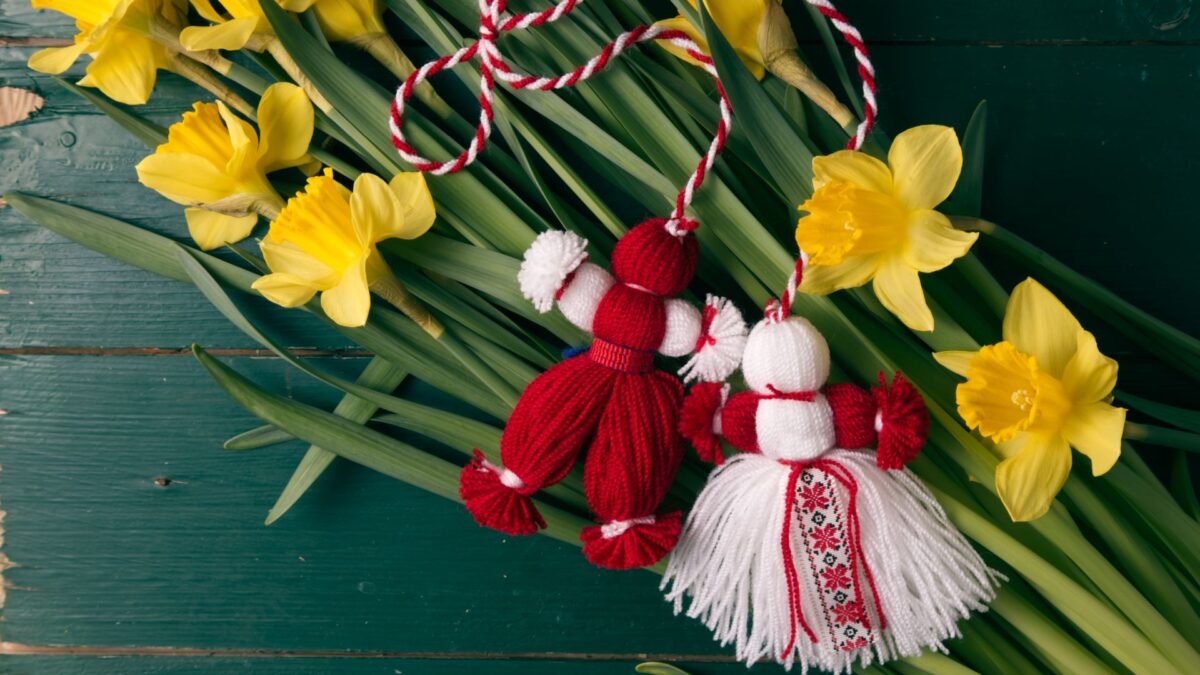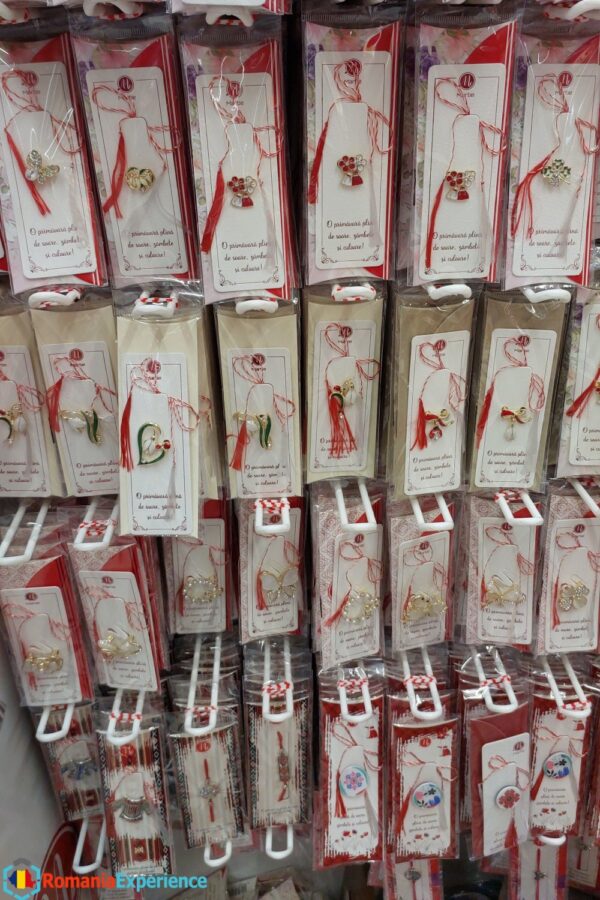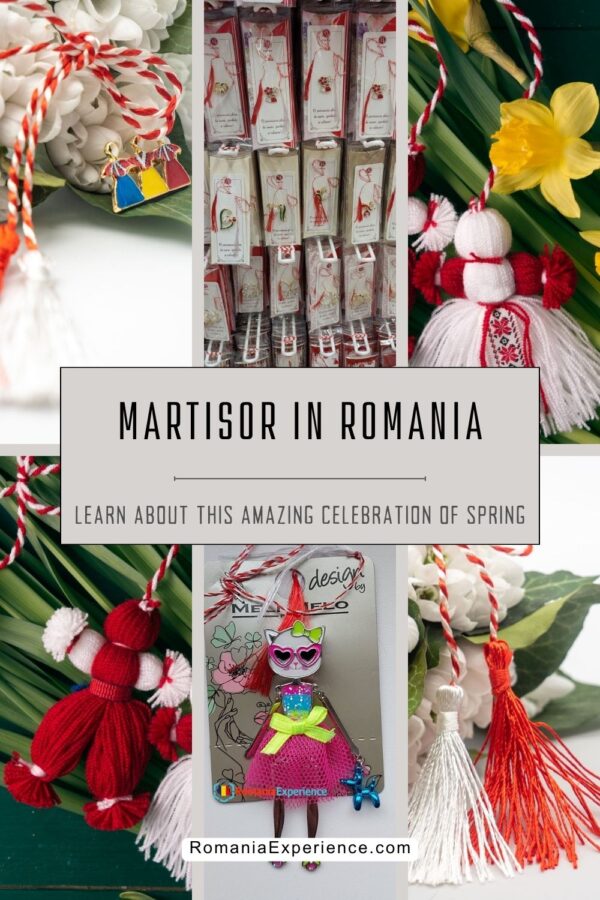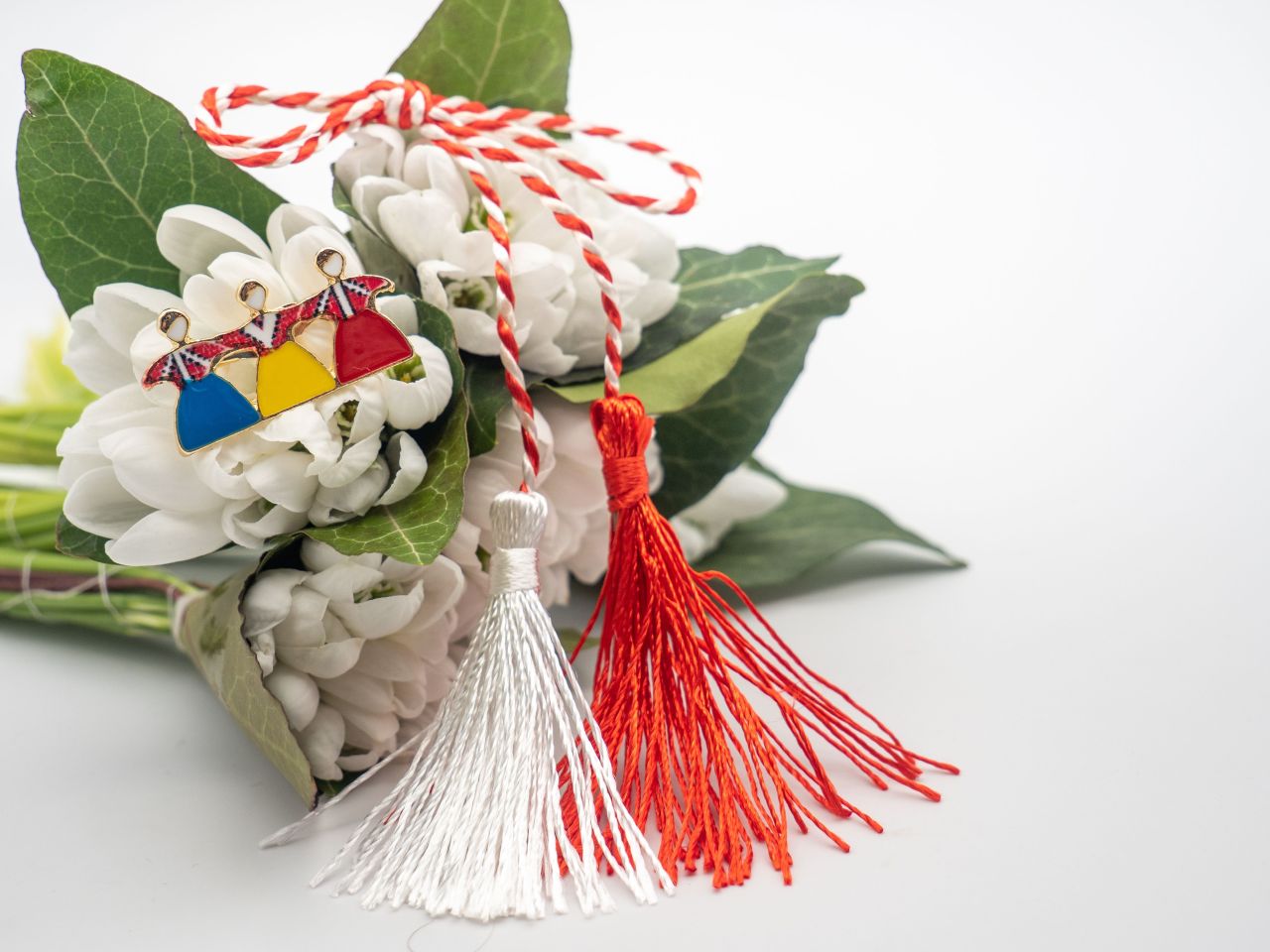The short version:
Mărțișor in Romania is a traditional celebration that marks the arrival of spring on March 1st. It involves the gifting of small trinkets tied with red and white strings, symbolizing the past winter and the coming summer.
“Martisor” (written Mărțișor in Romanian) is a special celebration of spring, being considered the symbol of nature’s rejuvenation after the long winter. It’s always celebrated on March 1st.
Traditionally, the Martisor is represented by a trinket tied with two intertwined strings: a white and a red one, representing the past winter and the coming summer, respectively.
Tradition has it that, on March 1st when Martisorul is celebrated in Romania, boys and men offer these small trinkets tied with the red and white string to all girls and women they know.
In turn, the ladies will wear their favorite Martisor (as they will receive plenty) until March 10th.
Usually, the Martisor will be worn as a brooch, but it can also be worn as a bracelet, tied with the red & white string, or even as a necklace.
While this would cover the basics of this beautiful celebration of Spring, I want to get even more in-depth below, as it is one of the most appreciated traditional Romanian celebrations – like the Dragobetele, about which I’ve talked in my previous article.
The Origins of the Martisor Tradition

While considered by many a unique Romanian tradition, Martisorul is actually celebrated throughout the Balkans, with countries like Bulgaria, Serbia, Albania and Greece celebrating it on March 1st under different names.
The Mărțișor tradition dates back thousands of years, tied with the Roman and Dacian cultures that inhabited the territory of modern-day Romania.
During those times, people believed that spring was a time of rebirth and renewal, and they celebrated it with various festivals and ceremonies.
One of the most important rituals was the “Marte” festival, which was dedicated to the Roman god of war, Mars.
During this festival, people would wear red and white amulets made of wool or string, which were believed to bring good luck and protect them from evil spirits.
Over time, this ritual became a Christian tradition, and the Martisor (which could be translated as “little March” in Romanian) is now associated with the arrival of spring and the rejuvenation of nature.
If you’re interested in learning more, you can read my article about Romanian culture here.
How is Martisor celebrated throughout Romania? (Customs and rituals)

The main way to celebrate the Martisor on March 1st is the one mentioned above. Men of all ages (including young boys) will buy and gift the Martisor to girls and women they know.
A week before the actual date (sometimes even sooner), the Martisor are starting to pop up in supermarkets and stores, but also in dedicated markets and fairs where handmade and special ones can be purchased.
No matter where you get them from, you can find Mărțișors ranging from traditional designs to modern interpretations, from traditional symbols for fortune (like the four-leaf clover or chimney sweeper) to anything you can think of, including pop stars, video game characters and such.

More traditional models are to be found in the rural areas – for example in the Bucovina and Maramures areas of the country (in the Northern parts of Romania), where the Martisor trinkets focus on artistic expression and traditional designs.
But, overall, it’s all about finding something you believe the person receiving the Martisor will like and getting that for her.
The lady will know that she will have to wear it until March 9th (sometimes the 10th), when somebody else has to remove it from her wrist – if she wore it as a bracelet – or from the clothes.
Pin this for later. Thank you!

Wrapping up
The Romanian Martisor celebration is an amazing tradition that is kept alive and appreciated by everybody here. And I am sure you will find it extremely interesting if you’re in the area during these times.
In the end, it doesn’t matter if you’re a local or a visitor. Celebrating the Martisor is a unique and unforgettable experience that will fill you with joy (and most likely, plenty of trinkets to bring back home because there are plenty great looking ones available!)
And if you feel like learning more about the country, why not read my previous article about the most dangerous city in Romania?
- List of the International Airports in Romania (with Map) - April 25, 2024
- Beach, Please Festival 2024: Lineup, Schedule & Dates [Updated April 24] - April 24, 2024
- Best Music Festivals in Romania – with Dates & Lineups [2024 Update] - April 17, 2024

